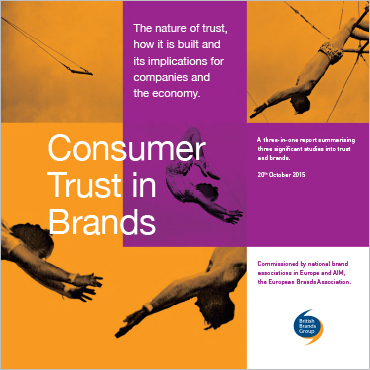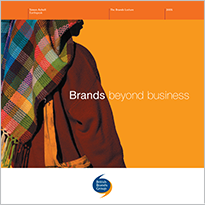What is a brand?
To some, a brand may just be a name, logo or corporate identity. To others it may be a trade mark or “trust mark” – a guarantee of consistent quality. To a brand-focused company it will be its most valuable and yet intangible business asset.
A brand is perhaps best explained by adopting the perspective of the individual (whether shopper or user) rather than that of the company. A brand is the sum of that individual’s knowledge and feelings for a product, service or company, and provides the means for exercising choice and preference. Over time, a product or service may develop in an individual’s mind to become familiar, recognisable, reassuring, unique and trust-inspiring – in other words, a strong brand.
Strong brands tend to grow as a result of companies taking continuous, careful note of what people want. Great emphasis is placed on consistency but also on research and development in order to meet individuals’ current and anticipated requirements better while staying one step ahead of competitors. Continuous innovation is often therefore an integral part of successful brand-building.
“Branding” is the means whereby companies strive to create and build strong brands. Over 1 million people are employed and companies invest some £33 billion per year in the creation and building of brands in the UK. This equates to an investment in the economy of some £16 billion per year, according to Westminster Business School. Great British brands such as Rolls Royce, Dyson and Johnnie Walker drive the UK’s export performance while the desire to build strong brands makes companies accountable, prompting socially beneficial and responsible practices.
How they work: managing brands
There are four necessary activities to ensure a brand continues to be recognised and have a strong, positive reputation:
- Monitor lifestyle changes
Populations age, become richer or poorer and change their behaviour and values. A brand must remain constant throughout, making any necessary change in design, packaging and price, while always being good value. - Explore technological changes
Constantly changing technology can improve benefits, such as cans with easy-open ends. Brand leaders need to be one step ahead of the field in bringing those benefits to individuals. - Measure product performance
To achieve quality, products must never deteriorate or become inferior to the competition. - Never change positioning
The positioning of a brand is its promise to the individual. Changing positioning is breaking faith with them. External factors such as packaging, distribution and media communication will all change to ensure that the brand’s reputation and recognition are retained and strengthened, but its position must remain constant.
Next: The History of Brands

















